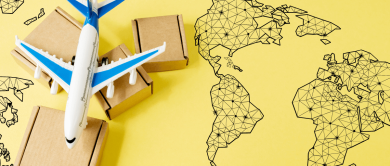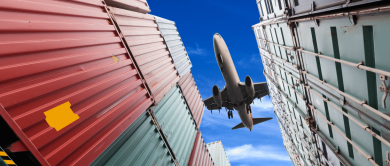Retail is the last link in distribution, the one in contact with the market and the customer. Retail sales can alter, slow down, or boost, the actions of both the industry and the distribution. In recent times, this inertia has transferred the digital revolution to the distribution sector and as in any paradigm shift, threats can also be opportunities, to improve cost efficiency, customer experience, and differentiation from competitors. The adoption and use of digital innovation are presumed to be the key element that will establish the competitive advantages of each company.
The consolidation of the quasi-automation of picking
Picking is the activity carried out by a team inside the warehouse to prepare customer orders. The client wants us to carry out this task without errors and with the quality required by him. With a digitized warehouse, it is very unlikely that there will be problems with orders and their preparation since everything is well informed in the system.
In addition, the entire inventory is updated and digitized thanks to the mobile device for warehouse management. Finally, with the appearance of intelligent warehouses, even the loads will be able to prepare themselves and will be transported to the means of distribution.
‘Customer-centric’ philosophy and the individualization of solutions.
The customer has become the center. Demand an efficient and fast service, the entire process must be aimed at achieving your satisfaction and making the user experience memorable. Moreover, the services must be delivered in a personalized way. It is essential to know each client in detail, their history, their habits, their changes to serve them without interference.
What could be more interesting than building, 100% made by you, your own bag, watch, or pair of shoes? Technology also plays a key role here by making combinations possible that were unimaginable a few years ago. Think, for example, of the potential of the mix between 3D printers and a good Big Data strategy, or between a good loyalty strategy applied to manufacturing processes. The possibilities in this field are exciting.
AI is already a reality
The sector will increasingly depend on chatbots, facial recognition technology, image recognition, and robotics for product handling all of which offer phenomenal opportunities for the consumer sector. What is newer today is seeing the first robots interacting with customers. The real investment in this aspect continues to be directed at reducing the costs of handling the product, from the house of the supplier to the house of the customer.
As an example, Amazon today already has 20% of its logistics centers led by robots. And, at the same time, the operators that are investing the most in technology are beginning to handle a huge amount of data about their customers, which is undoubtedly key to offering increasingly individualized experiences.
The power of social media
from the retailer to the distributor. Access to the company and the client must be possible from any channel: physical, telephone, email, web, social networks, chatbots. The online world has broken down geographical barriers and the client cannot tolerate unjustified delays or not being informed about your order.
Some will want to self-manage it and be on top of it, others to make it as easy as possible and give it all done. But they will always demand that the information is at their fingertips. The interaction in social networks to constantly tell stories does not work, you have to look for personalized and online communication with each of your key clients. This medium is becoming the most powerful source of receiving customer feedback.
The continuous use of the database as a ‘Think Tank’ is already essential
Data management as the main factor for decision making will continue to grow exponentially, and all this is thanks to technologies such as Big Data, machine learning, and AI (Artificial Intelligence). Analytical expertise is the key to the future. Data, when combined with intelligent technology, helps organizations create individualized experiences in a highly fragmented customer environment.
This processing implies that with biased information, erroneous decisions can be made that directly impact the company’s productivity. BI (Business Intelligence) enables all data to be stored in a single, very intuitive platform and allows you to create panels based on the most interesting KPIs, displaying graphs that help make the right decisions.
Environmental sustainability and the circular economy enter the equation
Consumers are looking for products that are made responsibly, that can improve their health and have a positive impact on the environment. Involving not only its production process but the entire supply chain. Therefore, it is necessary to introduce the concept of eco-friendly transport. While autonomous transport inside warehouses is becoming a reality, outside on the roads in a highly fragmented customer environment it is still a pipe dream, with many aspects of telecommunications, road safety, or adaptation of legislation to be polished.
In the packaging, reducing the number of plastics and promoting the use of biodegradable materials. As well as eliminating paper in administrative acts. In fact, the Green Logistics seal will be a claim for CSR companies that want to strengthen their reputation on all fronts.
The ‘delivery’ model of the end customer is extrapolated to distribution
One of the aspects that generates the most competition among companies in the sector is the delivery time: immediacy is essential for many customers. The objective for many of the retailers around the world is the applications that allow them to buy, pick up and deliver any product, in the shortest possible time. The leaders seek to be able to deliver the purchase between 30 and 40 minutes after placing the order, in addition to offering service 24 hours a day, seven days a week.
The appearance of IoT with the implementation of RFID technology
As commerce accelerates the rollout of physical store-based purchasing options like click and collect or store delivery, it’s crucial that your inventory have a very high level of accuracy. As the cost and size of RFID technology are reduced until they can be introduced into everyday products, retailers can monitor the inventory level and status of each item in their assortment.
This level of accuracy also makes it easier for store associates. Not only does this allow your order to be delivered to the customer faster, but it also lowers the dealer’s overall costs.
The omnichannel to the maximum expression
The omnichannel is already marking the presence of distribution. From the user’s point of view, it is understood as the way for the user to take advantage of all the existing channels to buy when, where, and how they are interested.
From the perspective of distributors, omnichannel requires a joint vision of all their activity to benefit from the synergies and advantages of each channel. The use of different digital technologies is necessary to achieve this omnichannel approach. The distributor must be able to prepare and ship orders from anywhere.















